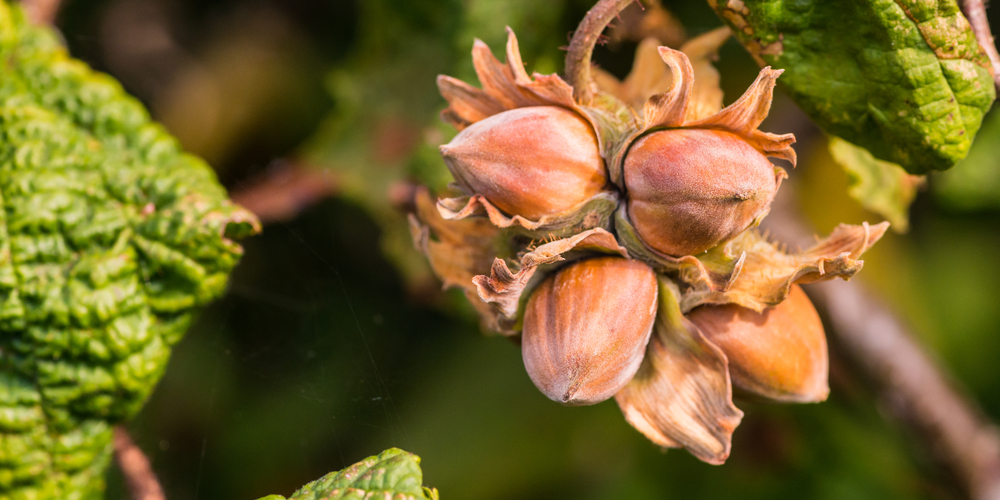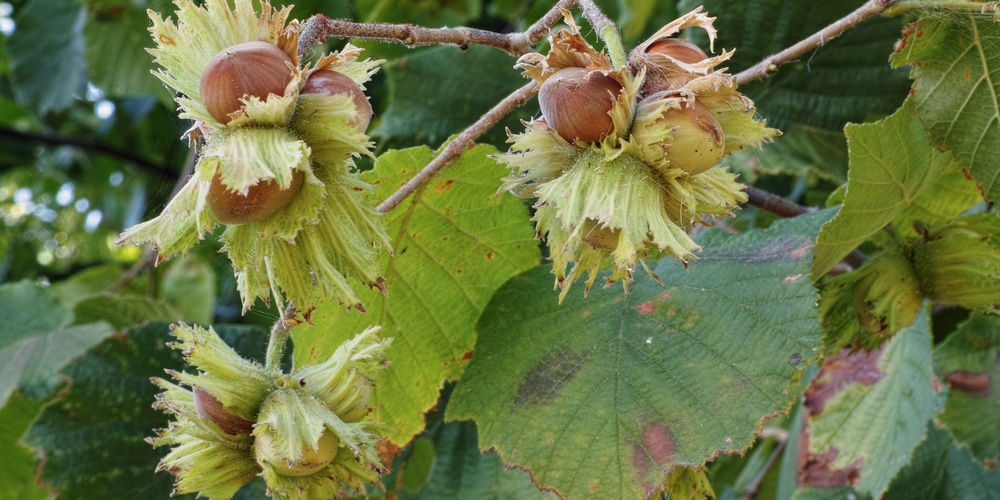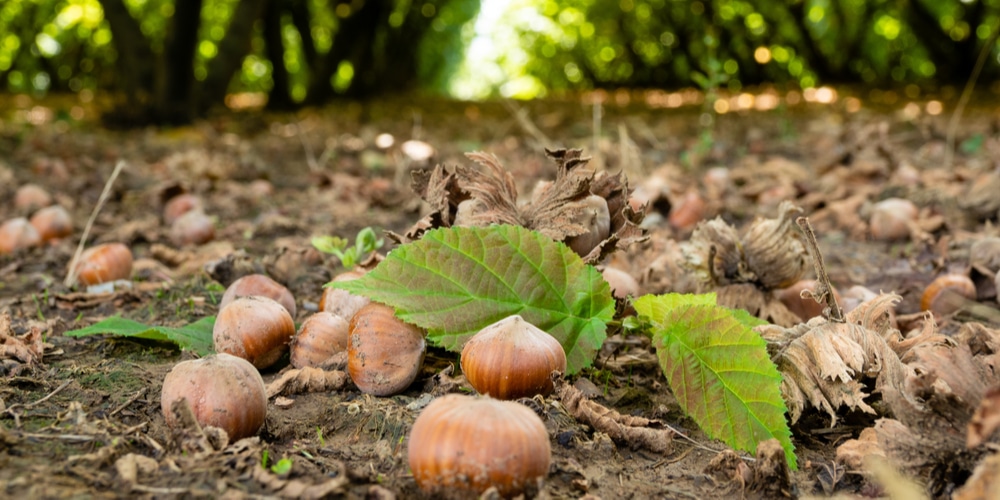Hazelnuts make excellent snacks, and if you could grow the tree in your home you can enjoy them anytime.
The one thing you have to consider is if it will grow in your area. Do Hazelnuts grow in Washington state? Commercially speaking, nearly all hazelnuts come from Oregon, with a very small percentage coming from Washington. Let’s take a closer look at how you can plant and care for hazelnuts in your yard or garden.
Do Hazelnuts Grow in Washington?
In the US, hazelnuts are largely grown in the Northwest, which include Wyoming, Oregon, Montana, Idaho and Washington. The nut tree thrives in USDA zones 3 through 6, and in milder winter climates such as Washington’s (zone 8).
Nut trees, including hazelnut will require a ‘chill period’ where they need to be exposed to cold temperatures of somewhere around -45 degrees F to produce fruit. Regions that get cold winters and mild summers are perfect for this species, and that means it’s great for Washington homes and yards.
Hazelnuts can definitely grow in Washington and similar states, and the good news is that you won’t have to do anything else except plant them in the best location and know how to take care of them. Nature will take care of the chilling part, and you’ll soon enjoy the tasty nuts once it’s established and after two to three growing seasons.
How to Grow Hazelnut Tree in Washington
Hazelnuts are among the easiest to grow, but they do have several fruiting requirements, specifically the chill period and having a second hazelnut nearby for cross-pollination aspects.
They only grow to around 15 feet in height and can provide much-needed shade in your home. Furthermore, hazelnut trees can accommodate a wide variety of soil types except those that are constantly wet and cold.
Hazelnut trees are also known as filbert or corylus trees. Like the others, it wants to get as much light as possible, so you should pick a location that gets all-day sun. Fruiting and nuts will largely depend on how much light it is getting, so consider this when planting hazelnuts in your yard.
Aside from that, you will need to prepare a slightly acidic and well-draining soil for your plant. It should be able to drink enough to stave off drought and heat, but not too much that it becomes waterlogged. Any medium is fine but we recommend putting in something that can hold water for brief periods, e.g., topsoil mixed with organic matter.
If you’re planning to grow hazelnut trees in Washington then you should plan ahead and put in two. Hazelnut won’t produce nuts on its own and requires another for cross-pollinating. To get the most harvest you should put both of them in a sunny location and about 15 to 20 feet apart from each other.
It’s best to plant hazelnut in the fall season if you’re starting from seed, or early winter if you’re bringing home a transplant. Once established, they don’t really need anything else but nature and watering every now and then. You can prune away dead wood and branches to allow air and sunlight to the tree’s center.
How Long Before Hazelnuts Produce Nuts
Harvesting hazelnuts will depend on the method of how you grew them. When starting from seed, you won’t be able to harvest until after 8 years or so. Transplants, however, are much faster as you can start enjoying the tasty nuts in about two to three years’ time.
Hazelnuts are not only pleasant for your taste buds but also for your eyes as well. They tend to grow as a shrub and in a rounded shape, with multiple stems going out and around the base.
Most hazelnut tree owners tend to grow it as a tree with a single main ‘trunk’. To enjoy the nuts, wait for them to develop breakage in their fuzzy husks, revealing the characteristic brown shell underneath. You may have to use a tool to crack the nuts open and get to the edible kernel.
Do Hazelnuts Grow In Washington State: Final thoughts
Harvesting hazelnuts is usually done in fall when the fruits have ripened during the summer. They generally drop on their own but you can also shake the tree and make the nuts fall on the ground.
Related Article: Trees That Start With H


